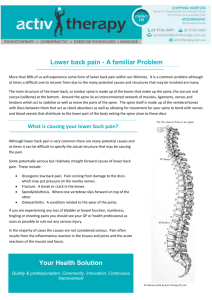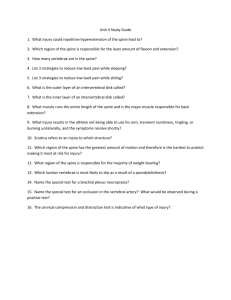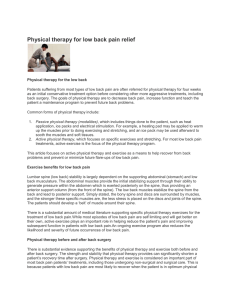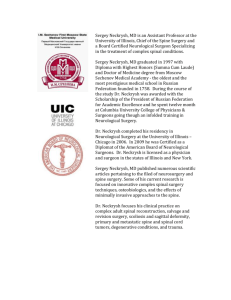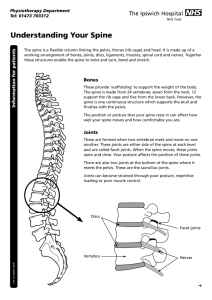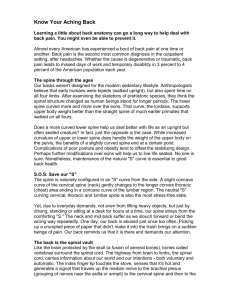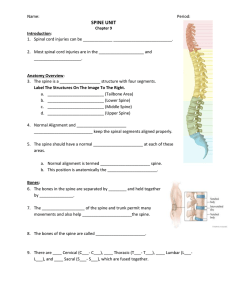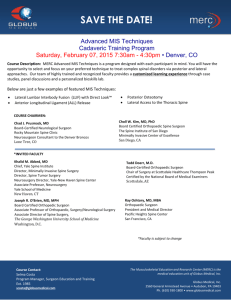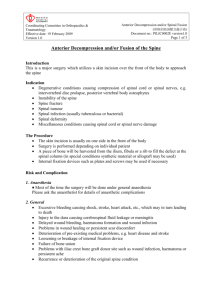Understanding Back Pain Brochure
advertisement
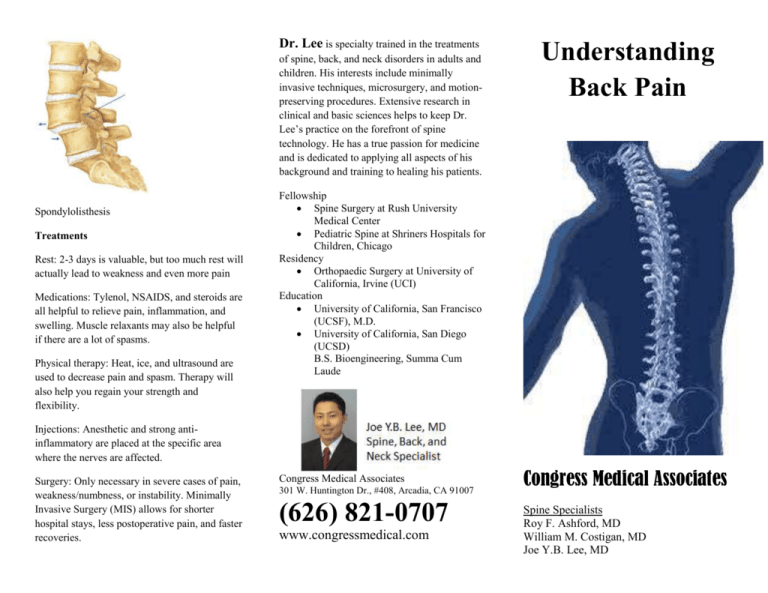
Dr. Lee is specialty trained in the treatments of spine, back, and neck disorders in adults and children. His interests include minimally invasive techniques, microsurgery, and motionpreserving procedures. Extensive research in clinical and basic sciences helps to keep Dr. Lee’s practice on the forefront of spine technology. He has a true passion for medicine and is dedicated to applying all aspects of his background and training to healing his patients. Spondylolisthesis Treatments Rest: 2-3 days is valuable, but too much rest will actually lead to weakness and even more pain Medications: Tylenol, NSAIDS, and steroids are all helpful to relieve pain, inflammation, and swelling. Muscle relaxants may also be helpful if there are a lot of spasms. Physical therapy: Heat, ice, and ultrasound are used to decrease pain and spasm. Therapy will also help you regain your strength and flexibility. Understanding Back Pain Fellowship Spine Surgery at Rush University Medical Center Pediatric Spine at Shriners Hospitals for Children, Chicago Residency Orthopaedic Surgery at University of California, Irvine (UCI) Education University of California, San Francisco (UCSF), M.D. University of California, San Diego (UCSD) B.S. Bioengineering, Summa Cum Laude Injections: Anesthetic and strong antiinflammatory are placed at the specific area where the nerves are affected. Surgery: Only necessary in severe cases of pain, weakness/numbness, or instability. Minimally Invasive Surgery (MIS) allows for shorter hospital stays, less postoperative pain, and faster recoveries. Congress Medical Associates 301 W. Huntington Dr., #408, Arcadia, CA 91007 (626) 821-0707 www.congressmedical.com Congress Medical Associates Spine Specialists Roy F. Ashford, MD William M. Costigan, MD Joe Y.B. Lee, MD Almost everyone will experience back pain at some point in their lives. What are the most common causes of back pain? Understanding how your spine works can help you understand why you have back pain, and what can be done to help. Strains & Sprains: The most common cause of back pain is injury to the muscles or ligaments. padding of the discs, the joints in the back take on more stress, and may develop osteoarthritis. What are the parts of the spine? Vertebrae: These bones connect to form a column with a canal that protects the spinal cord. Discs: The padding between the vertebrae Spinal Stenosis: The space around the spinal canal narrows, leading to pressure on the nerves. This may cause back and leg pain, as well as numbness and weakness. Spinal cord & nerves: Carry messages between your brain and muscles. Muscles and ligaments: Provide support and movement to the spine. Facet Joints: Help to stabilize the back of the spine and facilitate movement. Herniated Disc: If the outer wall is very weak or torn, then the jelly-like material inside may bulge or squeeze all the way through. Nerves can be “pinched” as a result. Degenerative Spondylolisthesis (Spon-dee-lolis-THEE-sis): Wear and tear in the discs, joints, and ligaments may lead to instability and a slippage between the vertebrae. The slippage may cause pinching of the nerves. Disc Degeneration: With age, discs may wear away and collapse. This will shrink the space available for the nerves. Also, without the
